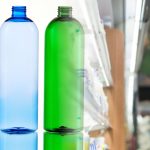In a world increasingly conscious of environmental impact, recycling has become a cornerstone of sustainable living. Among the many materials we recycle, Polyethylene Terephthalate (PET) bottles stand out due to their widespread use and recyclability. PET bottles, commonly used for beverages, personal care products, and other consumer goods, are valued for their durability, lightweight nature, and clarity. However, their post-consumer journey is equally important. This article delves into the significance and process of recycling PET bottles, emphasizing why it is essential for environmental conservation.
Why PET Bottle Recycling Matters
- Environmental Preservation: PET bottles, if not properly disposed of, contribute significantly to plastic pollution. Landfills are overrun with plastics, which take centuries to decompose. Recycling PET bottles reduces the volume of waste, conserving landfill space and mitigating pollution in oceans and landscapes.
- Resource Conservation: Producing new PET requires petroleum, a non-renewable resource. By recycling PET bottles, we reduce the demand for virgin petroleum, conserving natural resources and decreasing our dependency on fossil fuels.
- Energy Efficiency: Recycling PET bottles consumes less energy compared to producing new PET from raw materials. This reduction in energy usage translates to lower greenhouse gas emissions, contributing to the fight against climate change.
- Economic Benefits: The recycling industry creates jobs and stimulates economic growth. Collecting, processing, and repurposing PET bottles involve numerous steps, each contributing to the local and global economy.
The PET Bottle Recycling Process
The journey of a PET bottle from disposal to a new product involves several key stages:
- Collection: The first step in PET recycling is the collection of used bottles. This is typically achieved through curbside recycling programs, deposit return schemes, and recycling bins in public places. Effective collection systems are crucial for ensuring that PET bottles do not end up as litter or in landfills.
- Sorting: Once collected, PET bottles are transported to a recycling facility where they undergo sorting. Advanced sorting technologies, such as optical scanners, separate PET from other materials. This step ensures the purity of the recycled PET, enhancing the quality of the end product.
- Cleaning: After sorting, the PET bottles are thoroughly cleaned to remove any contaminants such as labels, adhesives, and residues. The bottles are washed in a series of baths and sometimes undergo additional treatments to ensure they are free of impurities.
- Shredding: Clean PET bottles are then shredded into small pieces known as flakes. This increases the surface area, making it easier to process the material in subsequent steps.
- Pelletizing: The PET flakes are melted down and formed into pellets. These pellets serve as the raw material for producing new PET products. They can be sold to manufacturers who will use them to create a variety of items, from new bottles to fibers for clothing and carpets.
- Manufacturing: The recycled PET pellets are used to manufacture new products. This step completes the recycling loop, turning waste into valuable materials that can re-enter the consumer market. Products made from recycled PET include new bottles, packaging, automotive parts, and even textiles.
Challenges and Innovations in PET Recycling
While PET recycling is effective, it faces several challenges. Contamination is a significant issue, as non-PET materials mixed with PET can compromise the quality of the recycled material. Public awareness and proper sorting practices are crucial in addressing this challenge.
Another challenge is the downcycling phenomenon, where recycled PET is used to produce lower-value products. Innovations in chemical recycling are emerging as a solution. Unlike mechanical recycling, which involves melting and re-molding, chemical recycling breaks down PET into its basic monomers. These monomers can be purified and re-polymerized into high-quality PET, effectively creating a closed-loop system.
Conclusion
Recycling PET bottles is a vital practice for environmental sustainability, resource conservation, and economic growth. By understanding the importance and process of PET bottle recycling, consumers can make informed choices that support recycling efforts. Advances in recycling technology promise to enhance the efficiency and effectiveness of PET recycling, paving the way for a more sustainable future. As we continue to innovate and improve our recycling systems, the potential for PET bottle recycling to positively impact the planet becomes increasingly significant. Let’s commit to recycling our PET bottles, contributing to a cleaner, greener world.




